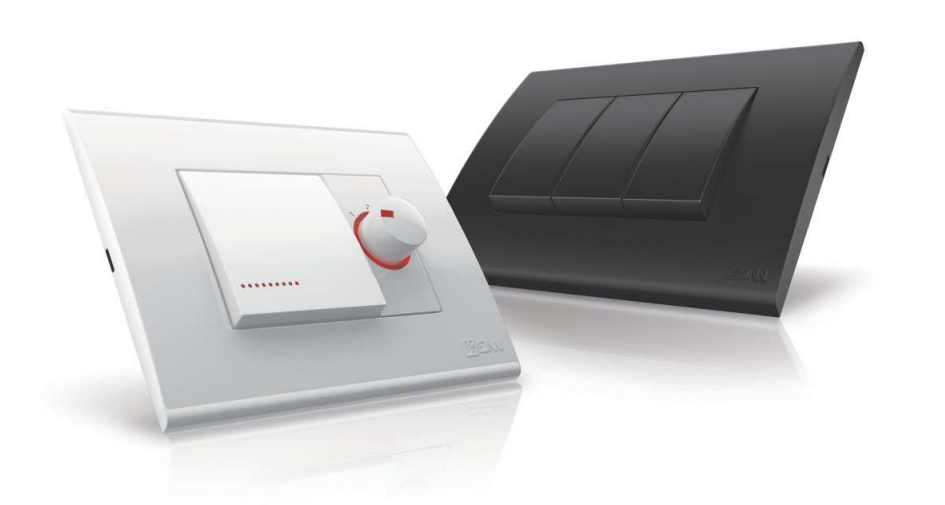

As we step further into the age of smart homes, even the simplest household devices are getting a high-tech makeover, including the once straightforward fan regulator. Gone are the days when the only choice for controlling your ceiling fan was a rotating knob or a pull chain. Now, homeowners are faced with a decision: stick with the reliable, traditional fan regulator or embrace the convenience and efficiency of a smart fan regulator. This choice is not just about upgrading to the latest technology; it is about how we interact with our homes, conserve energy, and enhance our daily lives.
Smart fan regulators offer the convenience of remote control, programmable settings, and integration with other smart home devices, promising a leap forward in convenience and energy efficiency. On the other hand, traditional fan regulators stand as a testament to simplicity and reliability, with their straightforward operation and lower upfront cost.
What Are The Main Differences Between Smart Fan Regulators & Traditional Fan Regulators?
Understanding the main differences between smart fan regulators vs traditional regulators is crucial for homeowners looking to make informed decisions about which system best fits their needs, lifestyle, and budget. Here are the main differences between smart fan regulators and traditional regulators:
| Feature | Smart Fan Regulator | Traditional Fan Regulator |
| Control Mechanism | Can be controlled remotely via apps, voice commands, or automation systems. | Manual adjustment using a physical dial or switch. |
| Energy Efficiency | Equipped with features like scheduling, environmental sensing, and adaptive speed control to optimize energy use. | Constant energy use; efficiency depends on manual operation. |
| Installation & Setup | Requires some technical know-how or professional help for initial setup and integration with smart home systems. | Simple and straightforward installation with basic electrical knowledge. |
| Cost | Generally more expensive due to advanced technology and features. | More affordable with a simple mechanism. |
| User Interaction | Allows for detailed customization, user profiles, and even learning user preferences over time. | Limited to manual control with no customization beyond the chosen speed. |
How Do Smart Fan Regulators Improve Energy Efficiency Compared To Traditional Regulators?
Smart fan regulators are designed with energy efficiency in mind. The smart fan regulator’s energy efficiency advantages can automatically adjust the fan speed based on the room temperature, presence of people, or time of day. This adaptability ensures that the fan is not running unnecessarily at high speeds when cooling is not required, thereby saving energy. Additionally, the ability to schedule operations can prevent energy wastage, ensuring the fan is only on when needed.
Are Smart Fan Regulators More Expensive Than Traditional Regulators? Is The Investment Worth It?
Smart fan regulators are generally more expensive than traditional fan regulators due to their advanced features, such as the ability to connect to Wi-Fi, integrate with smart home systems, and offer remote control capabilities. This price difference reflects the added convenience, energy efficiency, and potential for customization that smart regulators bring to the table.
Despite the higher initial cost, the investment in a smart fan regulator can be worth it for those who prioritize these modern conveniences and are looking to reduce their energy consumption over time.
How Easy Is It To Install & Setup Smart Fan Regulators Compared To Traditional Regulators?
Traditional fan regulators are generally easier to install and require no special setup. In contrast, smart fan regulators may need a more involved installation process, possibly requiring professional assistance. However, once installed, the setup process for smart regulators, including connecting to your home’s Wi-Fi and integrating with other smart devices, is usually straightforward through a mobile app.
Which Type Of Fan Regulator Is Best Suited For Different Home Environments & User Preferences?
Choosing for the best fan regulator depends on your home environment and personal preferences:
Tech-Savvy Households:
For those already invested in smart home technology, a smart fan regulator is a natural addition, offering seamless integration and enhanced convenience.
Energy-Conscious Users:
If reducing energy consumption is a priority, the adaptive features of smart fan regulators can contribute significantly to this goal.
Simple Needs:
For users who prefer simplicity and are less concerned with advanced features, traditional regulators will do the job effectively and affordably.
Rental Properties:
In rental homes where permanent changes or investments in smart technology might not be feasible, traditional regulators offer a practical solution.
The choice between smart fan regulators and traditional regulators ultimately hinges on what you value most for your home. If you are drawn to the latest technology, desire greater control over your home’s energy consumption, and are willing to invest in long-term savings, a smart fan regulator is an excellent choice. However, if your focus is on immediate affordability, simplicity, and ease of use without the need for advanced features, a traditional fan regulator will serve your needs well.
By considering your specific preferences, lifestyle, and home environment, along with the benefits of a fan regulator and smart regulator you can make an informed decision that enhances both comfort and efficiency in your living space.
